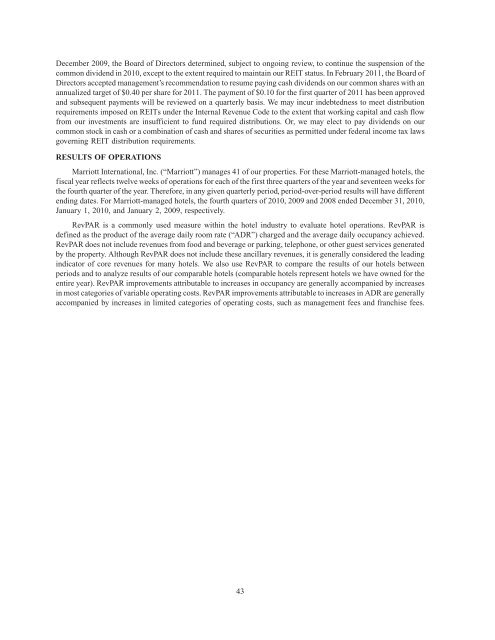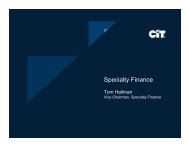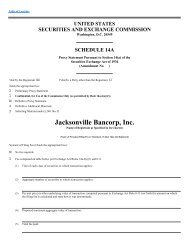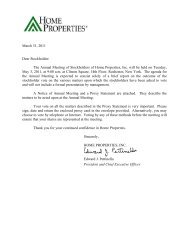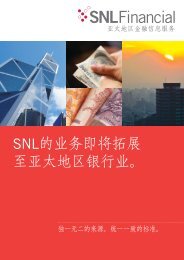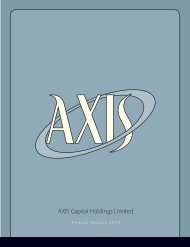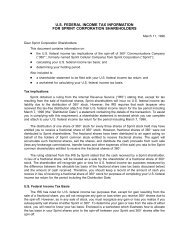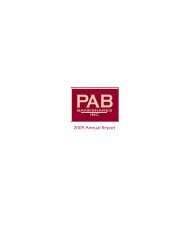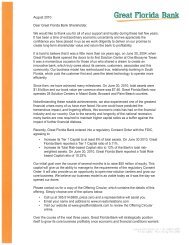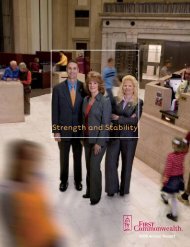December 2009, the Board of Directors determined, subject to ongoing review, to continue the suspension of the common dividend in <strong>2010</strong>, except to the extent required to maintain our REIT status. In February 2011, the Board of Directors accepted management’s recommendation to resume paying cash dividends on our common shares with an annualized target of $0.40 per share for 2011. The payment of $0.10 for the first quarter of 2011 has been approved and subsequent payments will be reviewed on a quarterly basis. We may incur indebtedness to meet distribution requirements imposed on REITs under the Internal Revenue Code to the extent that working capital and cash flow from our investments are insufficient to fund required distributions. Or, we may elect to pay dividends on our common stock in cash or a combination of cash and shares of securities as permitted under federal income tax laws governing REIT distribution requirements. RESULTS OF OPERATIONS Marriott International, Inc. (“Marriott”) manages 41 of our properties. For these Marriott-managed hotels, the fiscal year reflects twelve weeks of operations for each of the first three quarters of the year and seventeen weeks for the fourth quarter of the year. Therefore, in any given quarterly period, period-over-period results will have different ending dates. For Marriott-managed hotels, the fourth quarters of <strong>2010</strong>, 2009 and 2008 ended December 31, <strong>2010</strong>, January 1, <strong>2010</strong>, and January 2, 2009, respectively. RevPAR is a commonly used measure within the hotel industry to evaluate hotel operations. RevPAR is defined as the product of the average daily room rate (“ADR”) charged and the average daily occupancy achieved. RevPAR does not include revenues from food and beverage or parking, telephone, or other guest services generated by the property. Although RevPAR does not include these ancillary revenues, it is generally considered the leading indicator of core revenues for many hotels. We also use RevPAR to compare the results of our hotels between periods and to analyze results of our comparable hotels (comparable hotels represent hotels we have owned for the entire year). RevPAR improvements attributable to increases in occupancy are generally accompanied by increases in most categories of variable operating costs. RevPAR improvements attributable to increases in ADR are generally accompanied by increases in limited categories of operating costs, such as management fees and franchise fees. 43
The following table summarizes the changes in key line items from our consolidated statements of operations for the years ended December 31, <strong>2010</strong>, 2009 and 2008 (in thousands): Year Ended December 31, Favorable (Unfavorable) Change <strong>2010</strong> 2009 2008 <strong>2010</strong> to 2009 2009 to 2008 Total revenue ................................... $ 841,365 $ 840,592 $ 1,031,329 $ 773 $ (190,737) Total hotel expenses ........................... $ (556,260) $ (552,169) $ (645,909) $ (4,091) $ 93,740 Property taxes, insurance and other........... $ (49,623) $ (53,386) $ (52,465) $ 3,763 $ (921) Depreciation and amortization ................ $ (133,435) $ (139,385) $ (149,022) $ 5,950 $ 9,637 Impairment charges ............................ $ (46,404) $ (148,679) $ — $ 102,275 $ (148,679) Gain on insurance settlements ................ $ — $ 1,329 $ — $ (1,329) $ 1,329 Transaction acquisition and contract termination costs ............................ $ (7,001) $ — $ — $ (7,001) $ — Corporate general and administrative......... $ (30,619) $ (29,951) $ (28,702) $ (668) $ (1,249) Operating income (loss) ....................... $ 18,023 $ (81,649) $ 155,231 $ 99,672 $ (236,880) Equity (loss) earnings in unconsolidated joint ventures ................................ $ (20,265) $ 2,486 $ (2,205) $ (22,751) $ 4,691 Interest income ................................. $ 283 $ 297 $ 2,062 $ (14) $ (1,765) Other income ................................... $ 62,826 $ 56,556 $ 10,153 $ 6,270 $ 46,403 Interest expense and amortization of loan costs .......................................... $ (140,609) $ (132,997) $ (144,068) $ (7,612) $ 11,071 Write-off of premiums, loan costs and exit fees ........................................... $ (3,893) $ 371 $ (1,226) $ (4,264) $ 1,597 Unrealized gain (loss) on derivatives ......... $ 12,284 $ (31,782) $ 79,620 $ 44,066 $ (111,402) Income tax benefit (expense) ................. $ 155 $ (1,508) $ (439) $ 1,663 $ (1,069) (Loss) income from continuing operations ... $ (71,196) $ (188,226) $ 99,128 $ 117,030 $ (287,354) Income (loss) from discontinued operations .................................... $ 9,404 $ (100,434) $ 46,543 $ 109,838 $ (146,977) Net (loss) income .............................. $ (61,792) $ (288,660) $ 145,671 $ 226,868 $ (434,331) Loss (income) from consolidated joint ventures attributable to noncontrolling interests ...................................... $ 1,683 $ 765 $ (1,444) $ 918 $ 2,209 Net loss (income) attributable to redeemable noncontrolling interests in operating partnership ................................... $ 8,369 $ 37,653 $ (15,033) $ (29,284) $ 52,686 Net (loss) income attributable to the Company..................................... $ (51,740) $ (250,242) $ 129,194 $ 198,502 $ (379,436) Comparison of Year Ended December 31, <strong>2010</strong> with Year Ended December 31, 2009 Income from continuing operations includes the operating results of 97 hotel properties that we have owned throughout all of <strong>2010</strong> and 2009. The following table illustrates the key performance indicators of the comparable hotels for the periods indicated: Year Ended December 31, <strong>2010</strong> 2009 Total hotel revenue (in thousands) .................................................... $ 839,562 $ 828,990 Room revenue (in thousands) ......................................................... $ 643,694 $ 629,298 RevPAR (revenue per available room) ................................................ $ 87.05 $ 85.10 Occupancy .............................................................................. 70.14% 66.52% ADR (average daily rate) .............................................................. $ 124.11 $ 127.94 Revenue. Room revenues increased $14.4 million, or 2.3%, during the year ended December 31, <strong>2010</strong> (“<strong>2010</strong>”) compared to the year ended December 31, 2009 (“2009”). The room revenue increase resulting from the improved occupancy in <strong>2010</strong> of 362 basis points was partially offset by the decrease in average daily rate. The 44
- Page 1 and 2: 2010 Annual Report
- Page 3 and 4: Gallery Capital Hilton Washington,
- Page 5 and 6: UNITED STATES SECURITIES AND EXCHAN
- Page 7 and 8: This Annual Report is filed by Ashf
- Page 9 and 10: management companies to operate the
- Page 11 and 12: In February 2010, the mezzanine loa
- Page 13 and 14: Our strategy of combining lodging-r
- Page 15 and 16: dividend preference on such stock o
- Page 17 and 18: Hyatt Regency is a registered trade
- Page 19 and 20: consensual transfers of hotel prope
- Page 21 and 22: developer, or (ii) by a majority vo
- Page 23 and 24: We compete with other hotels for gu
- Page 25 and 26: RISKS RELATED TO HOTEL INVESTMENTS
- Page 27 and 28: and to the extent we incur similar
- Page 29 and 30: of environmental liabilities attach
- Page 31 and 32: k k k If we sell a property in a
- Page 33 and 34: to sell common shares in order to p
- Page 35 and 36: assets prior to the holders of our
- Page 37 and 38: Hotel Property Location Total Rooms
- Page 39 and 40: Characterization of Distributions F
- Page 41 and 42: Item 6. Selected Financial Data The
- Page 43 and 44: Significant Transactions in 2010 an
- Page 45 and 46: foreclosure was completed and the e
- Page 47: We are required to maintain certain
- Page 51 and 52: significantly different risk factor
- Page 53 and 54: Comparison of Year Ended December 3
- Page 55 and 56: discontinued operations for 2009 we
- Page 57 and 58: In July 2006, the Financial Account
- Page 59 and 60: floor at a strike rate X and sells
- Page 61 and 62: The following table reconciles net
- Page 63 and 64: The Board of Directors and Sharehol
- Page 65 and 66: ASHFORD HOSPITALITY TRUST, INC. AND
- Page 67 and 68: ASHFORD HOSPITALITY TRUST, INC. AND
- Page 69 and 70: ASHFORD HOSPITALITY TRUST, INC. AND
- Page 71 and 72: ASHFORD HOSPITALITY TRUST, INC. AND
- Page 73 and 74: ASHFORD HOSPITALITY TRUST, INC. AND
- Page 75 and 76: ASHFORD HOSPITALITY TRUST, INC. AND
- Page 77 and 78: ASHFORD HOSPITALITY TRUST, INC. AND
- Page 79 and 80: ASHFORD HOSPITALITY TRUST, INC. AND
- Page 81 and 82: The following table summarizes the
- Page 83 and 84: ASHFORD HOSPITALITY TRUST, INC. AND
- Page 85 and 86: ASHFORD HOSPITALITY TRUST, INC. AND
- Page 87 and 88: ASHFORD HOSPITALITY TRUST, INC. AND
- Page 89 and 90: ASHFORD HOSPITALITY TRUST, INC. AND
- Page 91 and 92: ASHFORD HOSPITALITY TRUST, INC. AND
- Page 93 and 94: Prior to July 18, 2012, Series D pr
- Page 95 and 96: The following table summarizes the
- Page 97 and 98: ASHFORD HOSPITALITY TRUST, INC. AND
- Page 99 and 100:
19. Income (Loss) Per Share ASHFORD
- Page 101 and 102:
ASHFORD HOSPITALITY TRUST, INC. AND
- Page 103 and 104:
21. Fair Value Measurements ASHFORD
- Page 105 and 106:
ASHFORD HOSPITALITY TRUST, INC. AND
- Page 107 and 108:
Item 9. Changes in and Disagreement
- Page 109 and 110:
Item 9B. Other Information None. PA
- Page 111 and 112:
SCHEDULE III ASHFORD HOSPITALITY TR
- Page 113 and 114:
Year Ended December 31, 2010 2009 2
- Page 115 and 116:
Exhibit EXHIBIT INDEX Description 3
- Page 117 and 118:
Exhibit Description 10.8.1 Assignme
- Page 119 and 120:
Exhibit Description 10.23.3 $35 Mil
- Page 121 and 122:
Exhibit Description 10.26.1 Joint V
- Page 123 and 124:
EXHIBIT 31.1 CERTIFICATION I, Monty
- Page 125 and 126:
EXHIBIT 32.1 CERTIFICATION PURSUANT
- Page 127 and 128:
Officers and Directors Officers Mon


